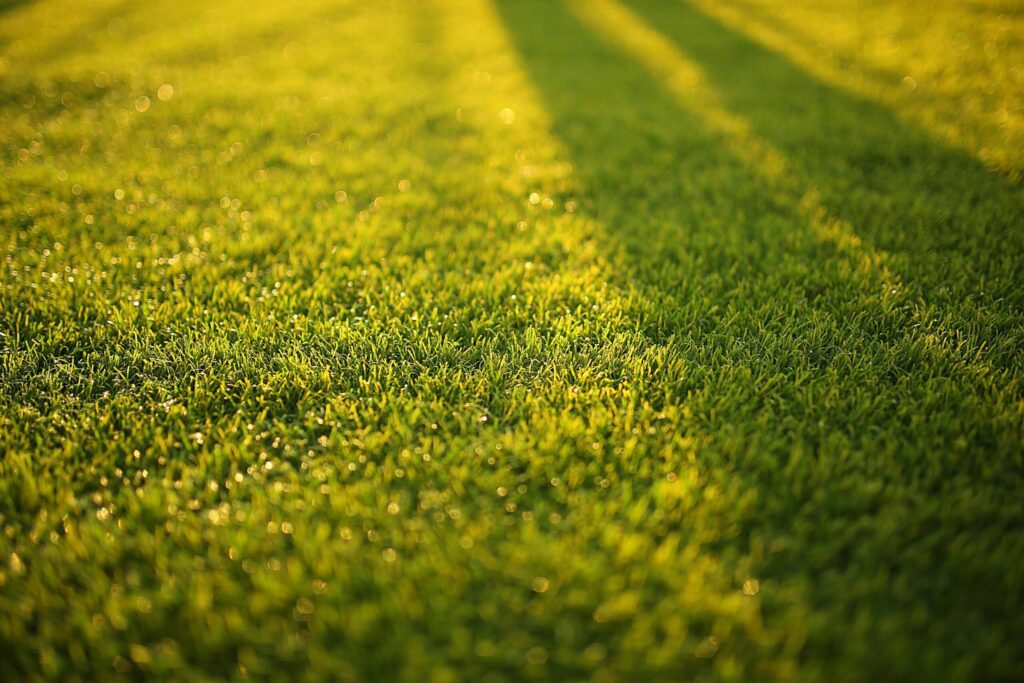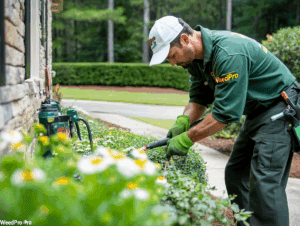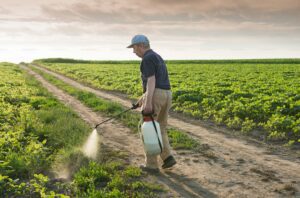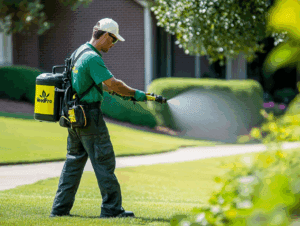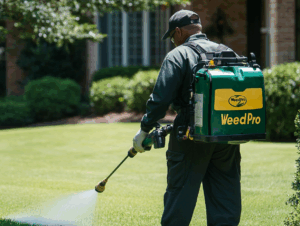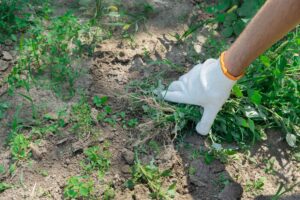If you own a home in Georgia, you know the challenges of keeping a lush, green lawn in the state’s often demanding climate. Here at WeedPro we’ve made it our mission to produce lawns that thrives in Georgia’s heat and humidity. It’s our speciality, so take it from us, the secret to a thriving lawn isn’t just watering: it begins with understanding the right fertilization schedule for your grass type. Fertilization practices must be tailored to the different seasons and grass types for optimal results, as your lawn’s needs change throughout the year. Here, we’ll explore the optimal times for fertilizing various grass species common in Georgia, including both cool season grass and warm season grass, and provide tips on best practices. Let’s ensure you maintain a healthy lawn all season long while looking picture-perfect with these expert insights.
Identifying Your Grass Type
Before you can create a fertilization schedule or choose the right fertilizer, it’s essential to identify your grass type. In Georgia, lawns are typically made up of either warm season grasses—like Bermudagrass, Zoysiagrass, and Centipedegrass—or cool season grasses such as Tall Fescue and Kentucky Bluegrass. Knowing your grass type is the foundation for proper lawn care, as each variety has unique needs when it comes to fertilizing, watering, and withstanding the state’s hot summer months and cooler winters.
To determine your grass type, start by examining the color, texture, and growth pattern of your grass blades. Warm season grasses usually thrive during the summer heat, turning brown during winter dormancy, while cool season grasses remain green year-round and are most vibrant in early spring and early fall. If you’re unsure, a local nursery or landscaping professional can offer detailed guidance, or you can consult resources from the Georgia Extension.
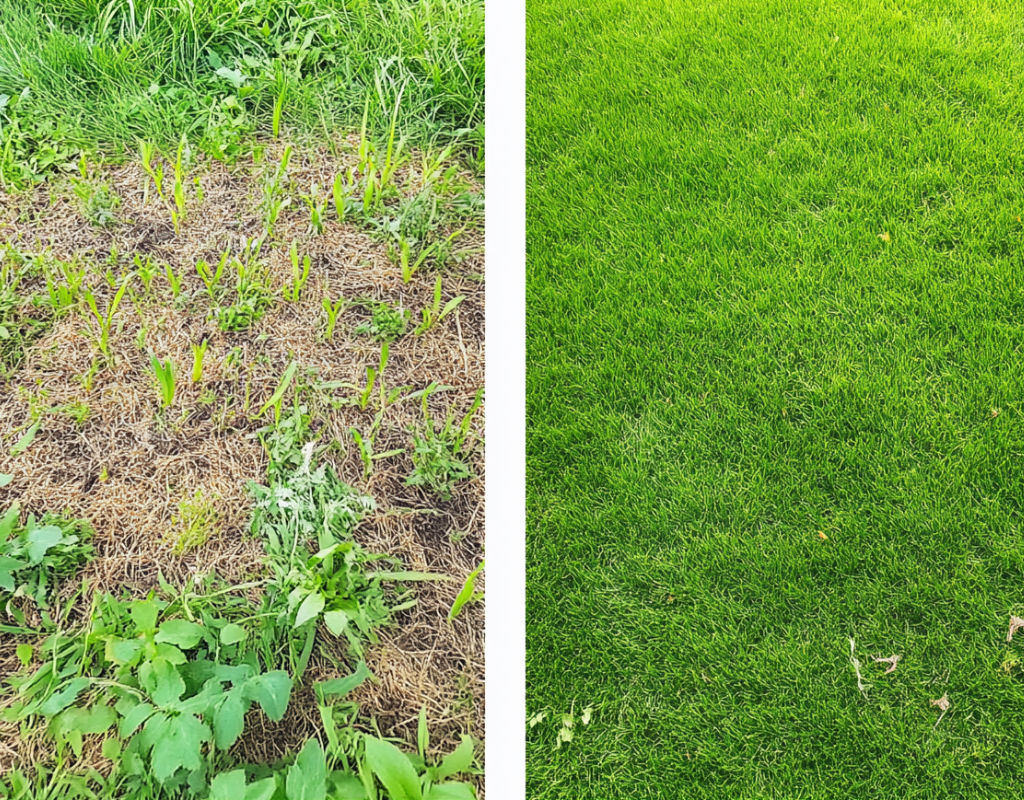
Once you’ve identified your grass type, you can tailor your fertilization schedule to match its specific needs. For example, most warm season grasses benefit from fertilizing during the peak growing season, while cool season grasses like Tall Fescue and Kentucky Bluegrass need more attention in the cooler months. Conducting a soil test is also a smart move—it helps pinpoint nutrient deficiencies and ensures your lawn receives all the nutrients it needs for healthy growth. This step is crucial for preventing over fertilizing, which can lead to nutrient runoff, drought stress, and even fungal diseases.
Using slow release fertilizers is another best practice, as they provide proper nutrients over an extended period, supporting a vibrant lawn without the risk of burning or frequent reapplication. Pairing the right fertilizer with effective weed control and proper maintenance—like mowing at the correct height and watering deeply but infrequently—will help your lawn stay healthy and resilient, even during the hot summer months or periods of heavy foot traffic.
By taking the time to identify your grass type and following a customized care plan, you’ll set your Georgia lawn up for year round success. With the right approach, you can enjoy a lush, green lawn that stands up to changing weather conditions and remains a beautiful backdrop for outdoor living.
Here’s a brief overview of how you can treat different grass types:
Bermudagrass
Bermudagrass
- Timing: You should begin fertilizing Bermudagrass when soil temperatures at a depth of 4 inches reach 65°F, which typically occurs in late April. Continue fertilizing every 6–8 weeks until mid-August, ensuring you avoid fall applications to prevent any winter damage. As temperatures rise into summer, adjust your fertilization schedule accordingly and avoid fertilizing during periods of extreme heat.
- Weed Control: Post emergent herbicides can be applied during the active growing season to control existing weeds in Bermudagrass. Apply these products when weeds are actively growing, but avoid application during periods of extreme heat or drought.
- Fertilizer: This grass thrives on high nitrogen fertilizers. Without adequate nitrogen, you may notice thinning grass and increased weed invasion.
- Slow-Release Preferred: Selecting a slow-release nitrogen fertilizer helps promote steady growth while minimizing the risk of burning your lawn.
Centipedegrass
Centipedegrass
- Timing: For Centipedegrass, fertilization should take place once after the spring green-up in late April and then again in mid-summer.
- Fertilizer: Known for its low-maintenance nature, this variety only requires two applications per year, and it’s crucial to skip fall fertilization altogether. Also, avoid fertilizing during periods of hot, humid weather to prevent stress on Centipedegrass.
- Avoid High Nitrogen/Phosphorus: Use a low-nitrogen formula, such as 15-0-15, which is effective based on soil test results.
Fescue
Fescue (Turf-Type Tall Fescue)
- Timing: Fertilize your Fescue in late winter or early spring, and again in late fall. It’s important to avoid heavy fertilization during summer months to prevent stress on the grass.
- Fertilizer: Balanced, slow-release fertilizers give the best results, ensuring a healthy growth cycle.
- Growth Peaks: This grass type generally experiences its best growth during cooler months, so plan your fertilization schedule accordingly.
Perennial ryegrass is another cool-season grass option that can be overseeded with Fescue to help maintain a green lawn during the winter.
Zoysiagrass
Zoysiagrass
- Timing: Zoysiagrass should be fertilized once it’s fully green, usually around late April or early May, followed by applications every 7–8 weeks until mid-August. Fertilizing at this time supports new growth, helping the lawn establish strong, vigorous blades.
- Fertilizer: Stick to a general warm-season fertilization schedule and prefer slow-release formulas for optimal health.
- Fall Fertilizing: Generally, fall fertilization is not recommended unless a soil test indicates a nutrient need.
St. Augustinegrass
St. Augustinegrass
- Timing: Fertilize St. Augustinegrass once it’s green in the spring and then every 6–8 weeks through late summer.
- Fertilizer: Regular nitrogen is crucial, and again, using slow-release products can help avoid burning during the warmer months. Always follow guidelines for how much fertilizer to apply, as using the correct amount helps prevent over-fertilization and supports healthy lawn growth.
- Avoid Cold-Weather Feeding: Make sure to stop fertilization after late August to protect your grass during cooler temperatures.
Tall Fescue
Tall Fescue
- Timing: Begin fertilizing Tall Fescue in early spring, with a follow-up application in late summer. Avoid fertilizing during the peak heat of summer to reduce stress on the grass.
- Fertilizer: A balanced slow-release fertilizer is ideal. This grass benefits from a good nitrogen source to support robust growth.
- Heat Tolerance: Tall Fescue is known for its heat tolerance and deep root system, making it suitable for transition zones.
Kentucky Bluegrass
Kentucky Bluegrass
- Timing: Fertilize Kentucky Bluegrass in the spring as it begins to green up, then again in early fall. Avoid fertilizing in late summer, as this can promote disease.
- Fertilizer: Use a high-nitrogen fertilizer to promote lush color and healthy growth.
- Disease Management: Regular fertilization can help keep the grass healthy and resilient against common turf diseases.
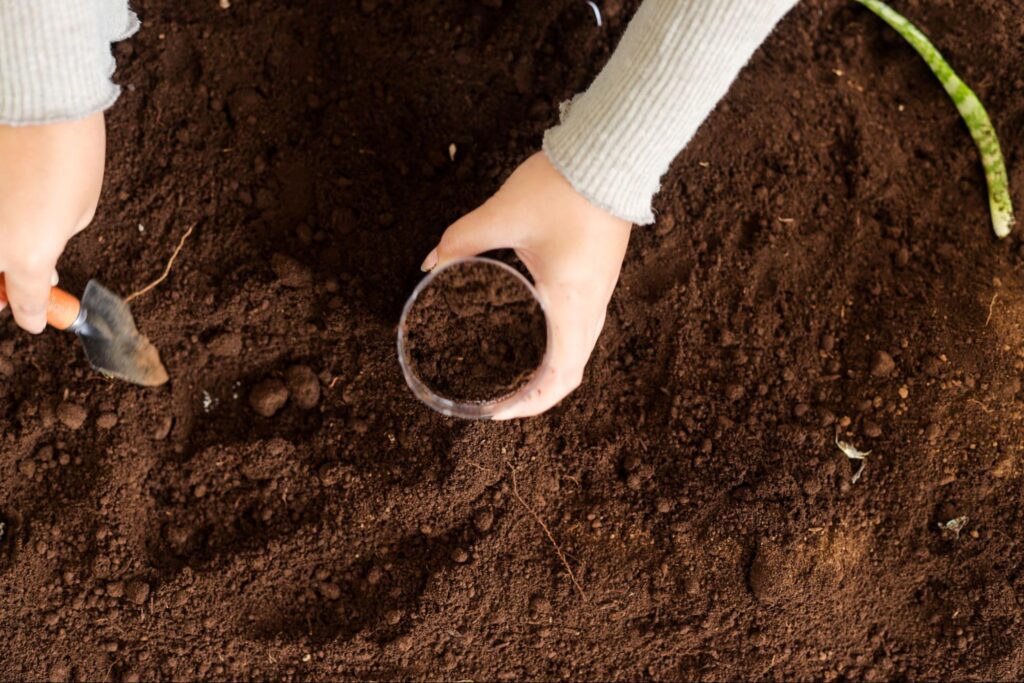
Lime
Lime
- Purpose: Lime serves to correct soil acidity by raising pH levels. Most soils in Georgia benefit from lime, but a soil test is essential to determine its necessity.
- Timing: While fall or winter is the best time to apply lime, it can be done any time if needed, based on soil test results.
- Application: Always follow soil test recommendations about the type and amount to apply, ensuring even distribution and watering in.
How to Apply Fertilizer
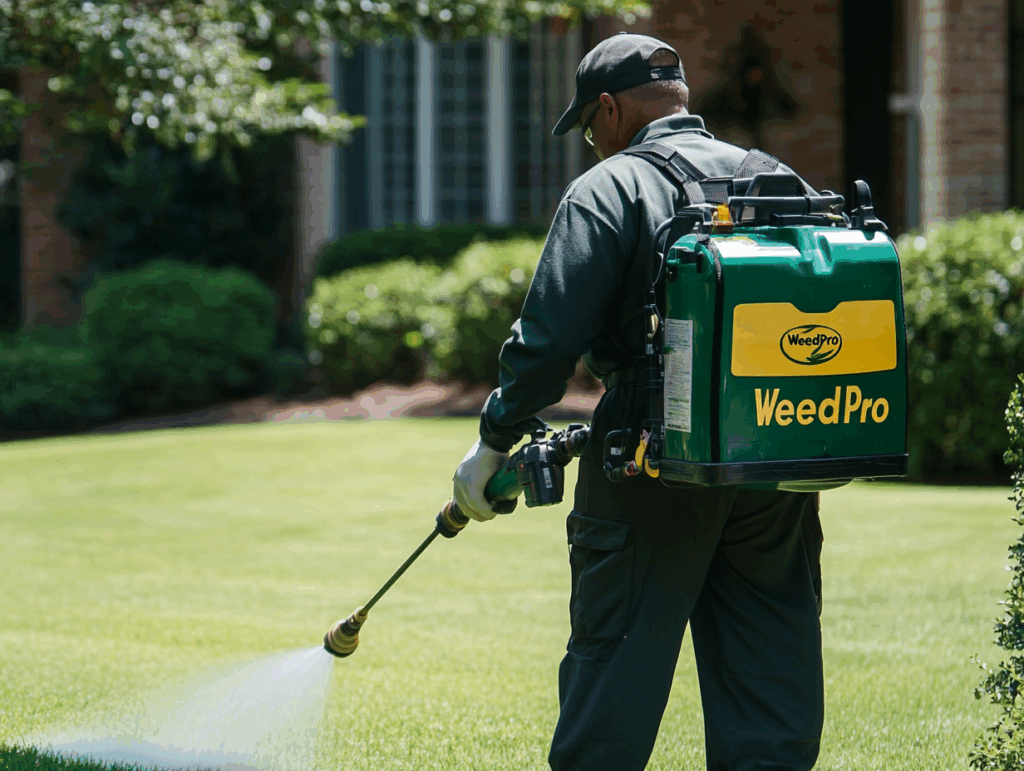
How to Apply Fertilizer
- Soil Test First: Before applying any fertilizer or lime, it’s crucial to conduct a soil test to determine nutrient needs and pH.
- Even Distribution: Use a broadcast or drop spreader to ensure uniform coverage of the fertilizer.
- Water In: After application, lightly water your lawn to help the nutrients reach the roots effectively.
- Avoid Overlap: To prevent over-fertilization, make sure to calibrate your spreader before use.
- Safety: Always adhere to label instructions about application rates and timing.
- Grass Seed Establishment: When starting a new lawn from grass seed, proper fertilizer application is essential to support seedling growth and successful establishment.
Frequently Asked Questions about Lawn Fertilization in Georgia
When is the best time to fertilize Bermudagrass in Georgia?
The ideal time for fertilizing your lawn, especially Bermudagrass, is when the soil temperature reaches 65°F, usually in late April. As your lawn greens up in spring, this is the optimal time to begin fertilization. Continue fertilizing every 6–8 weeks until mid-August to promote healthy growth. It’s also a good time to apply pre emergent herbicides to prevent spring and summer weeds.
How often should I fertilize Centipedegrass?
Centipedegrass requires fertilization once after the spring green-up in late April and again in mid-summer. It’s important to skip any fertilization in the fall.
For best results in controlling annual weeds, consider applying pre emergent herbicides in early spring to your Centipedegrass lawn.
What kind of fertilizer should I use for Fescue in Georgia?
For Fescue, it’s best to use balanced, slow-release fertilizers. Apply during late winter or early spring, and again in late fall, avoiding heavy fertilization in summer.
In addition to proper fertilization, it’s important to regularly control weeds, especially by timing pre-emergent herbicide applications in early fall to prevent winter weeds and invasive species common in Georgia.
Is it necessary to fertilize my lawn in the fall?
Generally, fall fertilization is not recommended for warm-season grasses like Bermudagrass and Zoysiagrass unless a soil test indicates a nutrient need. However, fall is also a good time to take preventive measures to keep your lawn weed free heading into winter.
What should I do before applying fertilizer to my lawn?
Conduct a soil test to determine your lawn’s nutrient needs and pH levels before applying fertilizer. This will help ensure your lawn receives the appropriate nutrients for optimal health.
Why is it important to use slow-release fertilizers?
Slow-release fertilizers provide a steady supply of nutrients over time, minimizing the risk of burning your lawn and promoting healthier growth, especially during warmer months. They help maintain consistent nutrition for your lawn season long, ensuring optimal health and appearance throughout the entire growing season.

